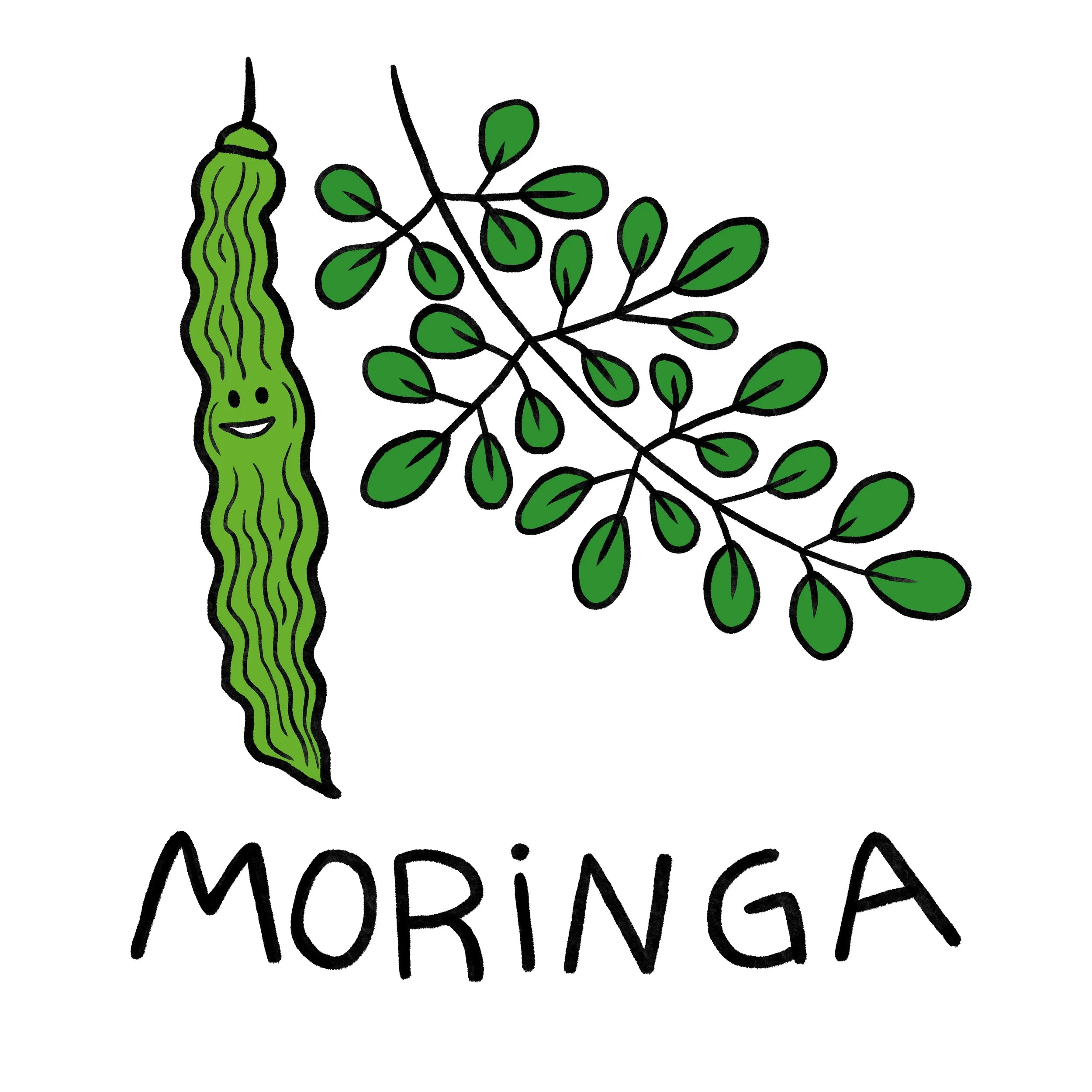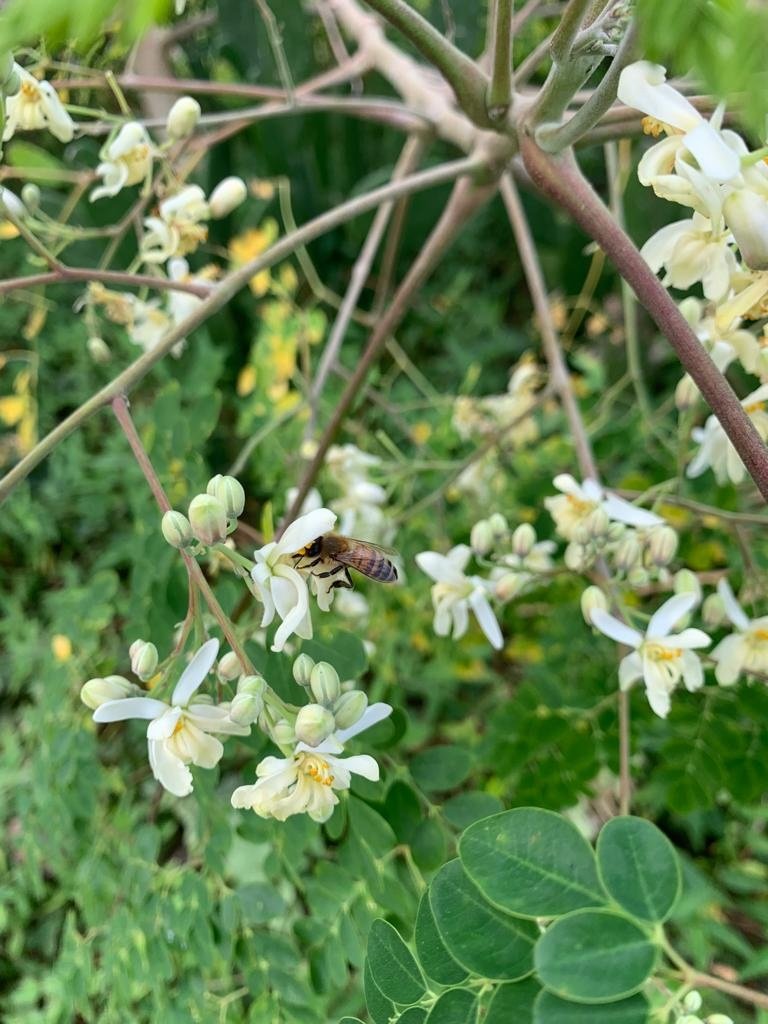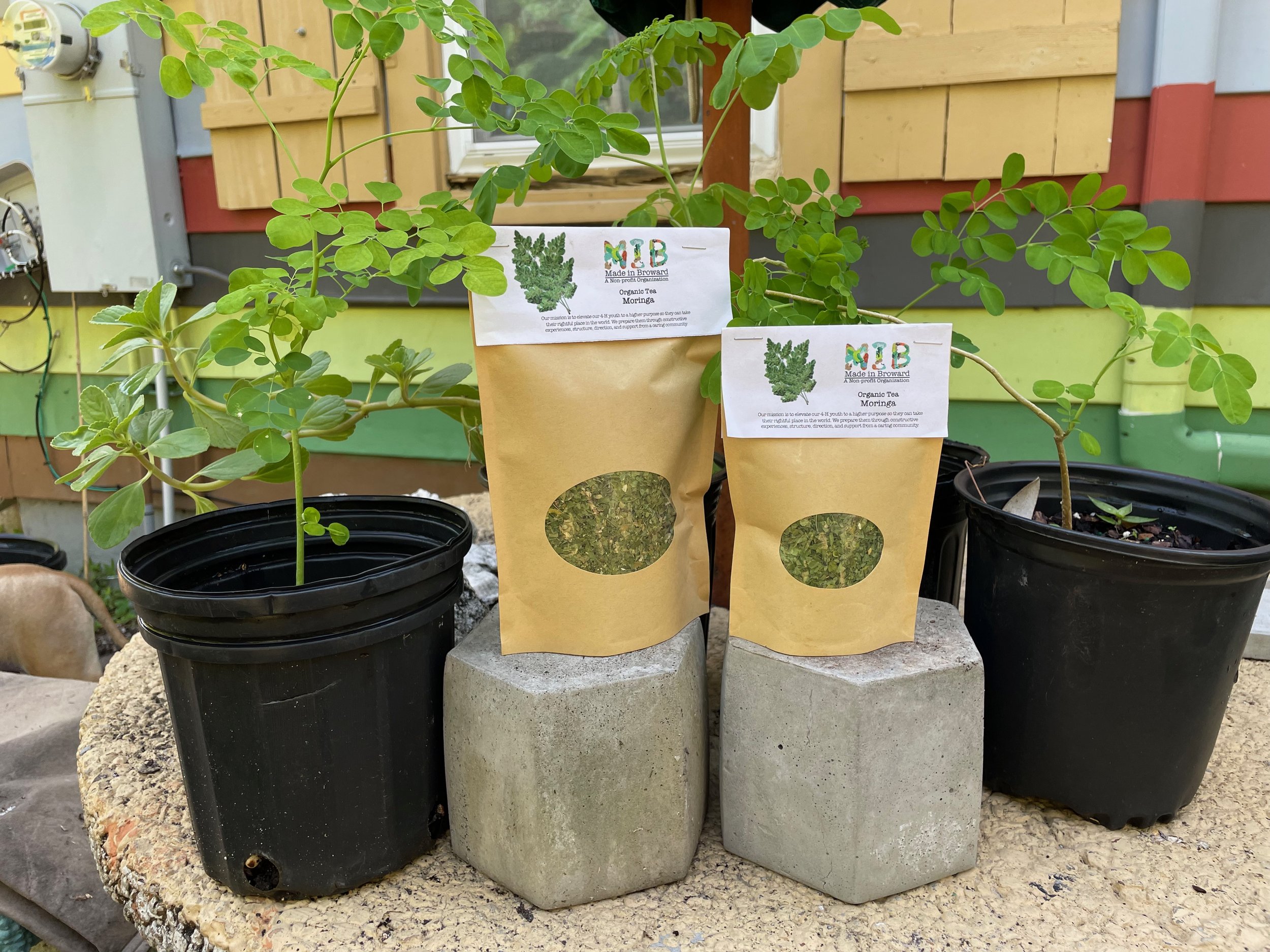Moringa
Here at Made In Broward we take an informal approach to growing food in our food forests. We believe that everyone has a “green thumb” and with a little practice and perseverance we can learn to grow, harvest and cook food grown in our own backyards, balconies, window sill,or anywhere where you can safely place a plant pot that has access to sunlight.
With all that being said I would like to introduce you to Moringa “ The Miracle Tree”. We feel particularly blessed living here in South Florida, due to the effect of climate change. South Florida has now been updated to a warmer hardiness zone 11a which means that we can grow a lot of food that is grown in the tropics and sub-tropics. But I digress, don’t get me started on climate change and its impact on our environment. Back to the benefits of Moringa!
The Moringa tree thrives globally in most tropical and subtropical regions. Moringa is more than your average tree. It is extremely drought tolerate (2)3, the bark is perfect for wood burning stoves,the roots can be used in a treatment for toothaches (9) scientific studies confirm that several parts of the tree (leaves, flowers, stems and fruit) have shown to be beneficial against cancer(15) All parts of the moringa tree are edible and it has a high nutritive value(1)4. “According to the Food and Agriculture Organization of the United Nations, just 25 grams of moringa leaf powder supplies a person with their entire day’s calcium and vitamin A needs, half the day’s protein and potassium needs and about three-quarters of the day’s iron needs.”The leaves can be eaten raw in a salad and the flowers which are also edible make a beautiful display on the salad. You can also use the leaves and seed pods in soups and stews.
In our Garden kitchen we use the Moringa leaves to make a variety of teas and if the leaves are blended they make an excellent and nutritious powder that can be used in soups and smoothies. On community harvest days when the community comes together to share in “Mother Nature's bounty” our community meals always include a salad harvested from our food forest with Moringa playing a pivotal role in the ingredients!
Moringa Tea
We use the leaves to make a delicious Moringa tea. The leaves can be eaten raw in a salad and the flowers which are also edible make a beautiful display on the salad. You can also use the leaves and seed pods in soups and stews.
A.How to Make Moringa Tea at Home using fresh leaves
Harvest a handful of fresh Moringa leaves, wash thoroughly.
Place a pot of water to boil.
When the water has boiled add one to two teaspoons in a cup
Pour on hot not boiling water into the cup and seep for around 5min
Strain, sweeten if need be and enjoy!
B. How to make moringa Tea at home using dry leaves
Harvest enough leaves that can fit on a cookie tray. 2.
Wash the leaves and dry with a paper towel. Leave the washed leaves on the tray in a dry place for around three days so they dry out completely.
Bake the leaves in the oven at 170 degrees for 15 min
When the leaves are cool store in an airtight container
Moringa Powder
C. How to make Moringa powder at home
Harvest two cups of fresh Moringa leaves( if you already have dried leaves you can omit steps 1 to3)
Wash and dry with a paper towel, place the washed leaves on a tray
Leave to dry for three days
Bake in the oven at 170 degrees for 15min
When the leaves are cool blend in a blended until the leaves resemble a fine powder. Use in soups, strews, smoothies ect.
References
Moringa oleifera: An Updated Comprehensive Review of Its Pharmacological Activities, Ethnomedicinal, Phytopharmaceutical Formulation, Clinical, Phytochemical, and Toxicological Aspects






